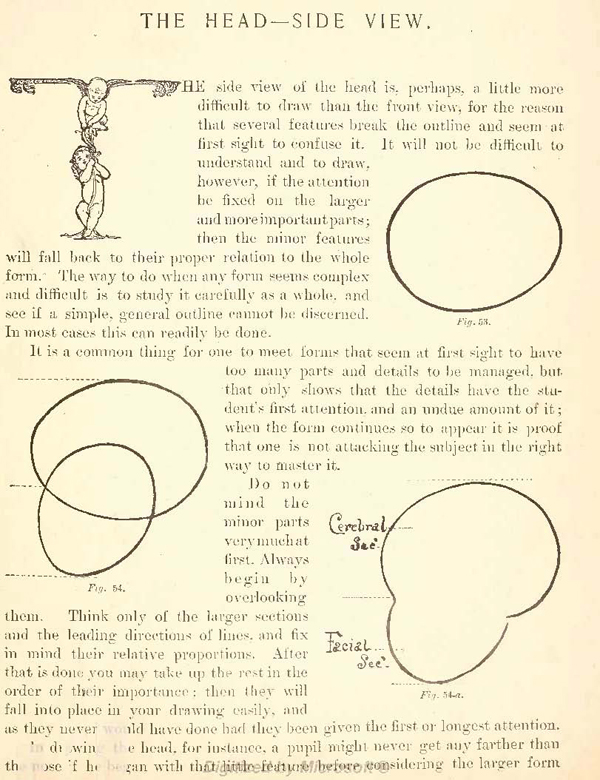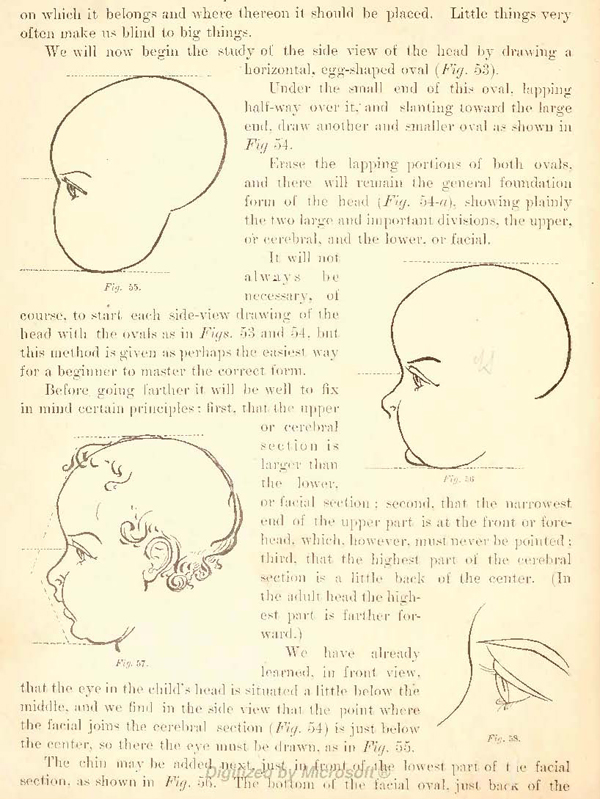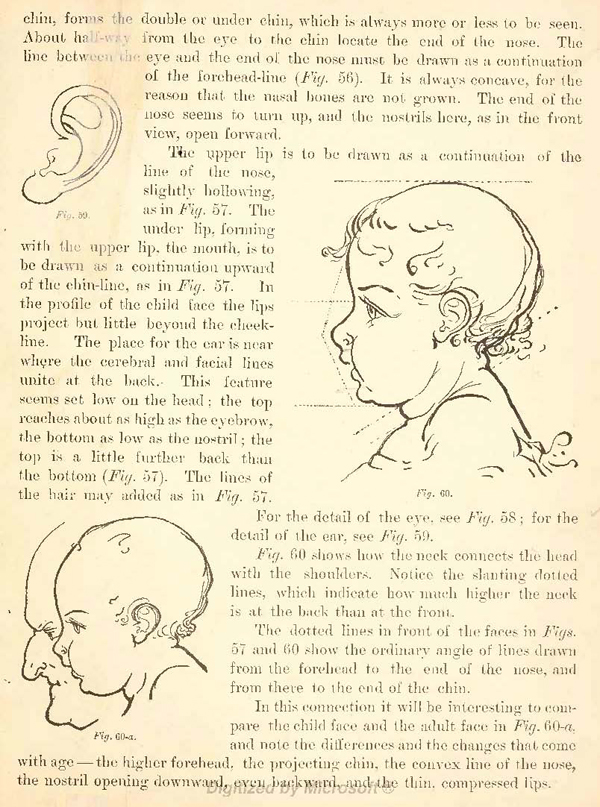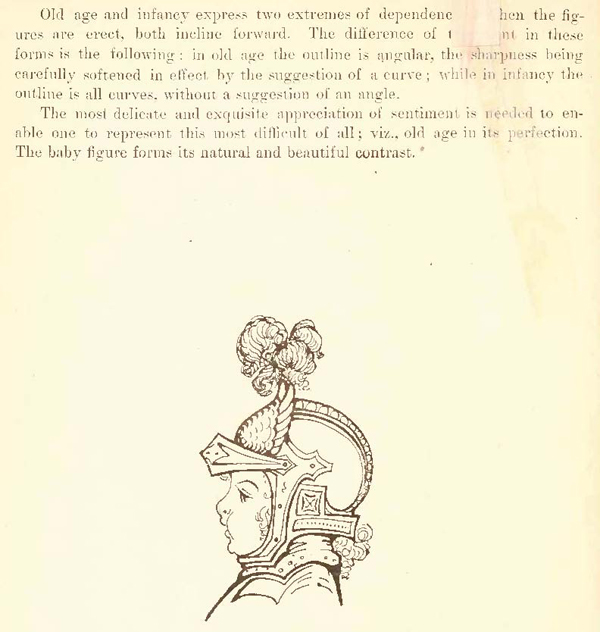Home > Directory of Drawing Lesson > Human Face > Drawing Children's Faces and Heads from Side View
Drawing Child's Face From the Side : How to Draw Kids's Heads From the Profile View
|





[The above words are pictures of text, below is the actual text if you need to copy a paragraph or two]
THE HEAD SIDE VIEW
The side view of the head is, perhaps, a little more difficult to draw than the front view, for the reason that several features break the outline and seem at first sight to confuse it. It will not be difficult to understand and to draw, however, if the attention be fixed on the larger and more important parts ; then the minor features will fall back to their proper relation to the whole. The way to do when any form seems complex and difficult is to study it carefully as a whole, and see if a simple, general outline cannot be discerned.
In most cases this can readily be done.
It is a com-mon thing for one to meet forms that seem at first. sight to have too many parts and details to be managed, but that only shows that the details have the student's first attention, and an undue amount of it ; when the form continues so to appear it is proof that one is not attacking the subject in the right way to master it.
Do not mind the minor parts very much at first. Always begin by overlooking them. Think only of the larger sections and the leading directions of lines, and fix in mind their relative proportions.
Little things very often make us blind to big things.
We will now begin the study of the side view of the head by drawing a -horizontal, egg-shaped oval (Fig. 53). Under the small end of this oval, lapping half-way over it: and slanting toward the large end, draw another and smaller oval as shown in Fig 54.
Erase the lapping portions of both ovals. and there will remain the general foundation form of the head (Fig. 54-a). showing plainly the two large and important divisions. the upper, or cerebral, and the lower, or facial.
The under lip, forming with the upper lip, the mouth, is to be drawn as a continuation upward of the chin-line, as in Fig. 57. In the profile of the child face the lips project but little beyond the cheek-line. The place for the ear is near where the cerebral and facial lines unite at the back.- This feature seems set low on the head ; the top reaches about as high as the eyebrow, the bottom as low as the nostril ; the top iS a little further back than the bottom (Fig. 57). The lines of the hair may added as in Fig. 57.
For the detail of the eye, see Fig. 58 ; for the detail of the ear, see Fig. 59.
Fig. 60 shows how the neck connects the head with the shoulders. Notice the slanting dotted lines, which indicate how much higher the neck is at the back than at the front.
The dotted lines in front of the faces in Figs. 57 and 60 show the ordinary angle of lines drawn from the forehead to the end of the nose, and from there to the end of the chin.
In this connection it will be interesting to compare the child face and the adult face in Fig. 60-a, and note the differences and the changes that come with age the higher forehead, the projecting chin, the convex line of the nose, the nostril opening downward, even backward, and the thin, compressed lips.
Old age and infancy express two extremes of dependence when the figures are standing up both incline forward. The difference of these forms is the following : in old age the outline is angular, the sharpness being carefully softened in effect by the suggestion of a curve; while in infancy the outline is all curves. without a suggestion of an angle.
The most delicate and exquisite appreciation of sentiment. is needed to enable one to represent this most difficult of all; old age in its perfection. The baby figure forms its natural and beautiful contrast.




